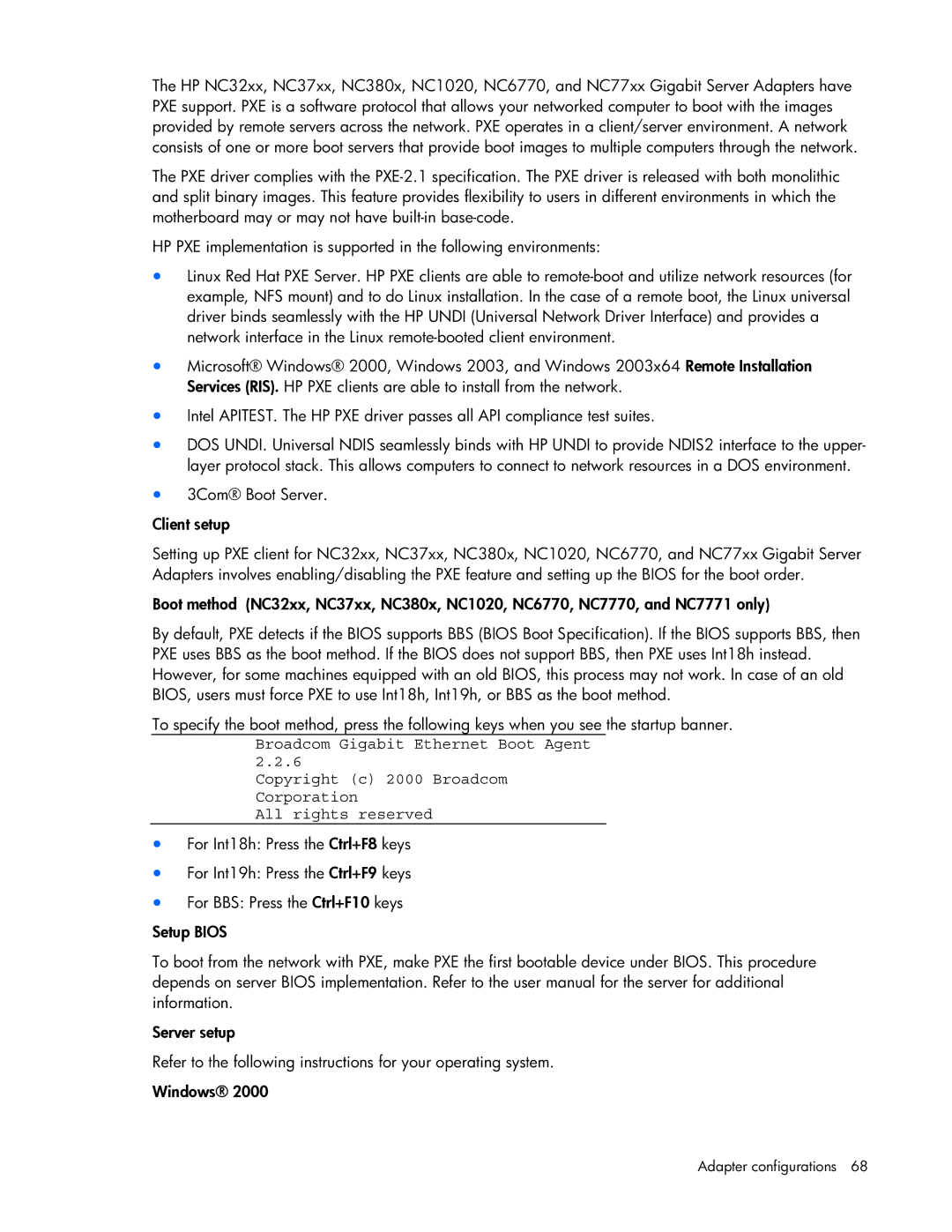The HP NC32xx, NC37xx, NC380x, NC1020, NC6770, and NC77xx Gigabit Server Adapters have PXE support. PXE is a software protocol that allows your networked computer to boot with the images provided by remote servers across the network. PXE operates in a client/server environment. A network consists of one or more boot servers that provide boot images to multiple computers through the network.
The PXE driver complies with the
HP PXE implementation is supported in the following environments:
•Linux Red Hat PXE Server. HP PXE clients are able to
•Microsoft® Windows® 2000, Windows 2003, and Windows 2003x64 Remote Installation Services (RIS). HP PXE clients are able to install from the network.
•Intel APITEST. The HP PXE driver passes all API compliance test suites.
•DOS UNDI. Universal NDIS seamlessly binds with HP UNDI to provide NDIS2 interface to the upper- layer protocol stack. This allows computers to connect to network resources in a DOS environment.
•3Com® Boot Server.
Client setup
Setting up PXE client for NC32xx, NC37xx, NC380x, NC1020, NC6770, and NC77xx Gigabit Server Adapters involves enabling/disabling the PXE feature and setting up the BIOS for the boot order.
Boot method (NC32xx, NC37xx, NC380x, NC1020, NC6770, NC7770, and NC7771 only)
By default, PXE detects if the BIOS supports BBS (BIOS Boot Specification). If the BIOS supports BBS, then PXE uses BBS as the boot method. If the BIOS does not support BBS, then PXE uses Int18h instead. However, for some machines equipped with an old BIOS, this process may not work. In case of an old BIOS, users must force PXE to use Int18h, Int19h, or BBS as the boot method.
To specify the boot method, press the following keys when you see the startup banner.
Broadcom Gigabit Ethernet Boot Agent 2.2.6
Copyright (c) 2000 Broadcom Corporation
All rights reserved
•For Int18h: Press the Ctrl+F8 keys
•For Int19h: Press the Ctrl+F9 keys
•For BBS: Press the Ctrl+F10 keys
Setup BIOS
To boot from the network with PXE, make PXE the first bootable device under BIOS. This procedure depends on server BIOS implementation. Refer to the user manual for the server for additional information.
Server setup
Refer to the following instructions for your operating system.
Windows® 2000
